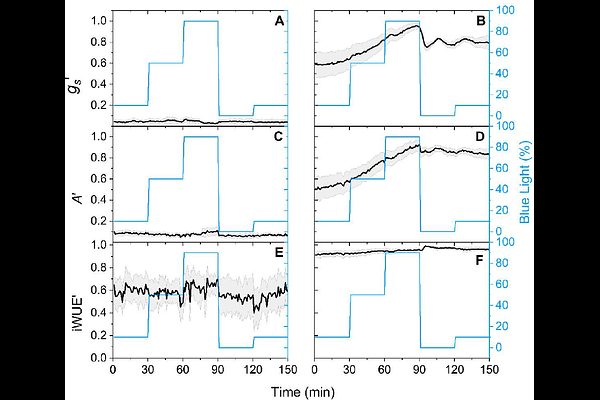Blue light increases stomatal conductance and photosynthesis in Agave hybrid

Blue light increases stomatal conductance and photosynthesis in Agave hybrid
Sartori, H. L.; Silva, S. J.; Cruz, L. P.; Laira, M. D.; Raya, F. T.; Pereira, G. A.; Ribeiro, R. V.
AbstractBlue light (BL) plays an important role in stomatal opening, finely tuning plant responses to environmental conditions. While the BL signaling pathway is well understood in C3 and C4 plants, its role in crassulacean acid metabolism (CAM) plants remains uncertain. Traditionally, stomata in CAM plants were considered insensitive to BL stimulation, and as a result, studies on such interaction were overlooked for a long time. Only recently, studies have found that the BL signaling cascade is active in CAM plants. Here, we investigated the effects of BL intensity on stomatal behavior in Agave, a highly productive CAM plant, by stimulating Agave leaves with BL and taking measurements of leaf gas exchange during the morning (closed stomata) and in the afternoon (open stomata). Our findings revealed that BL had no significant effect on stomatal opening during the morning period. However, BL increased stomatal conductance (gs) by 67.3%, photosynthetic rate (A) by 109.5%, and intrinsic water use efficiency (iWUE) by 69.5% in the late afternoon. These findings suggest that Agave responded to BL similarly to C3 and C4 species when stomata were already open. We hypothesized that high CO2 levels due to C4 acid decarboxylation during the morning act as a repressive factor for stomatal opening by inhibiting the phosphorylative activity of the HT1 protein, a key protein involved in stomatal behavior. This inhibition likely prevents the activation of the signaling pathway mediated by CBC1/2 kinase, which integrates blue light (BL) signals with low intercellular CO2 levels.